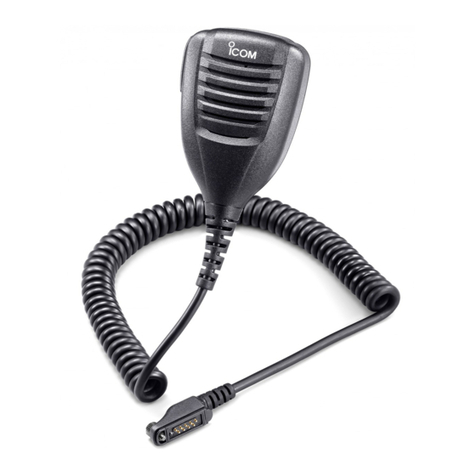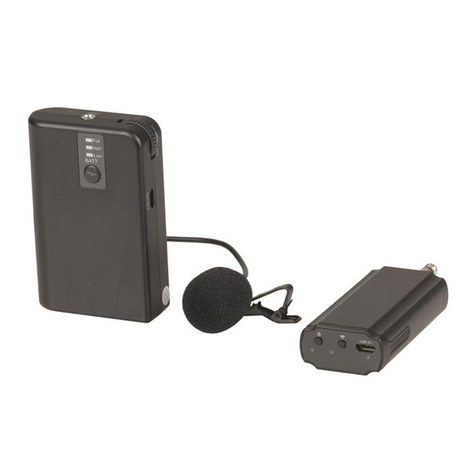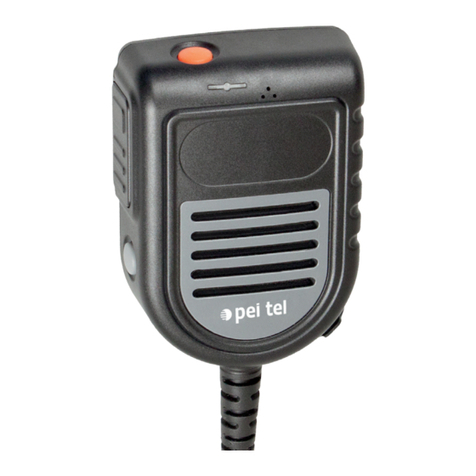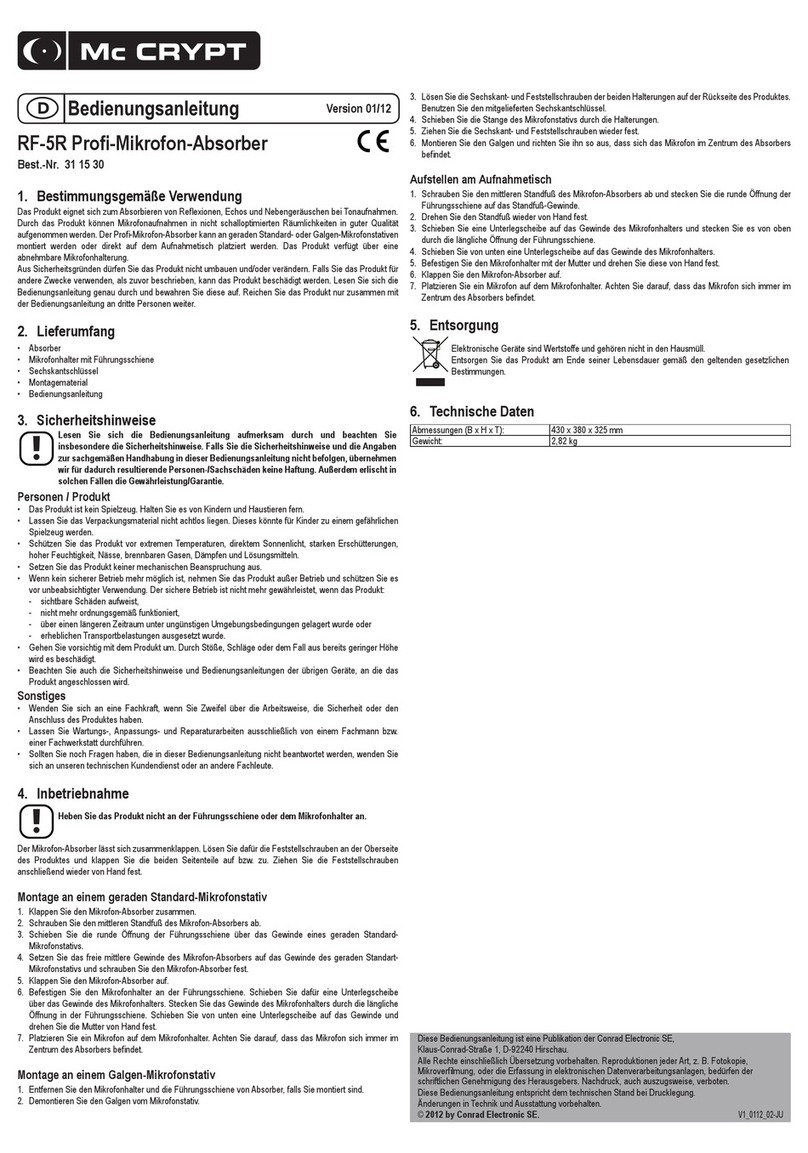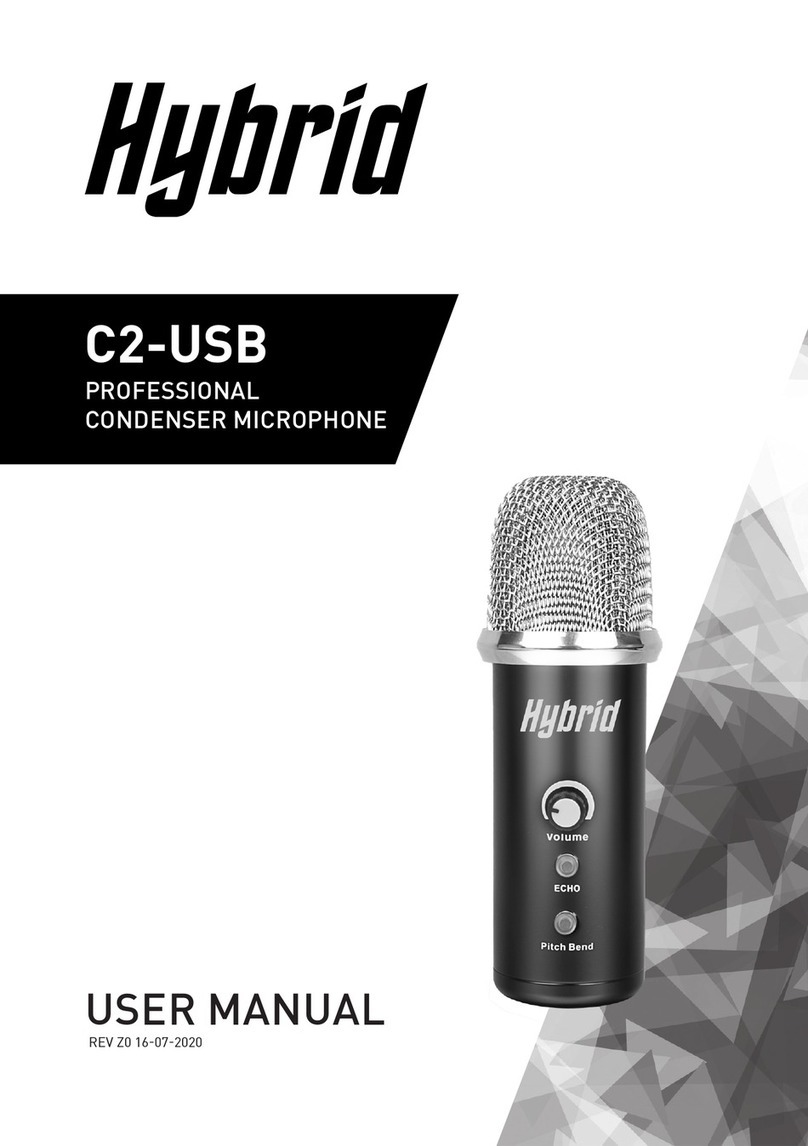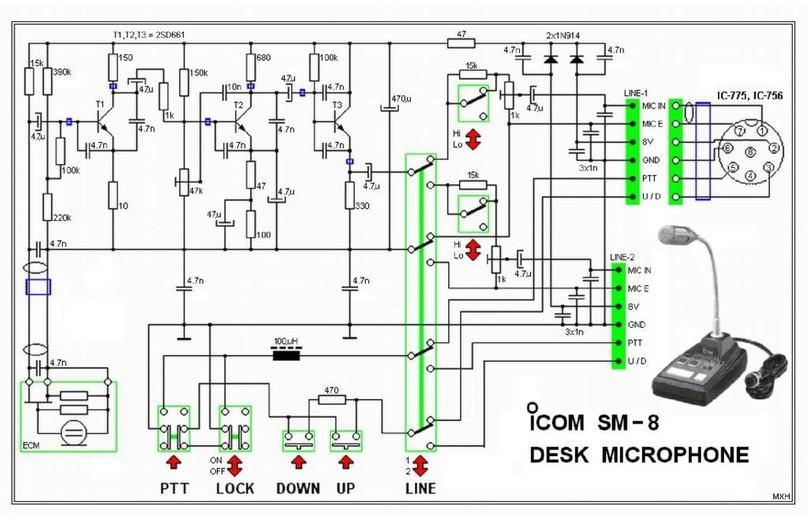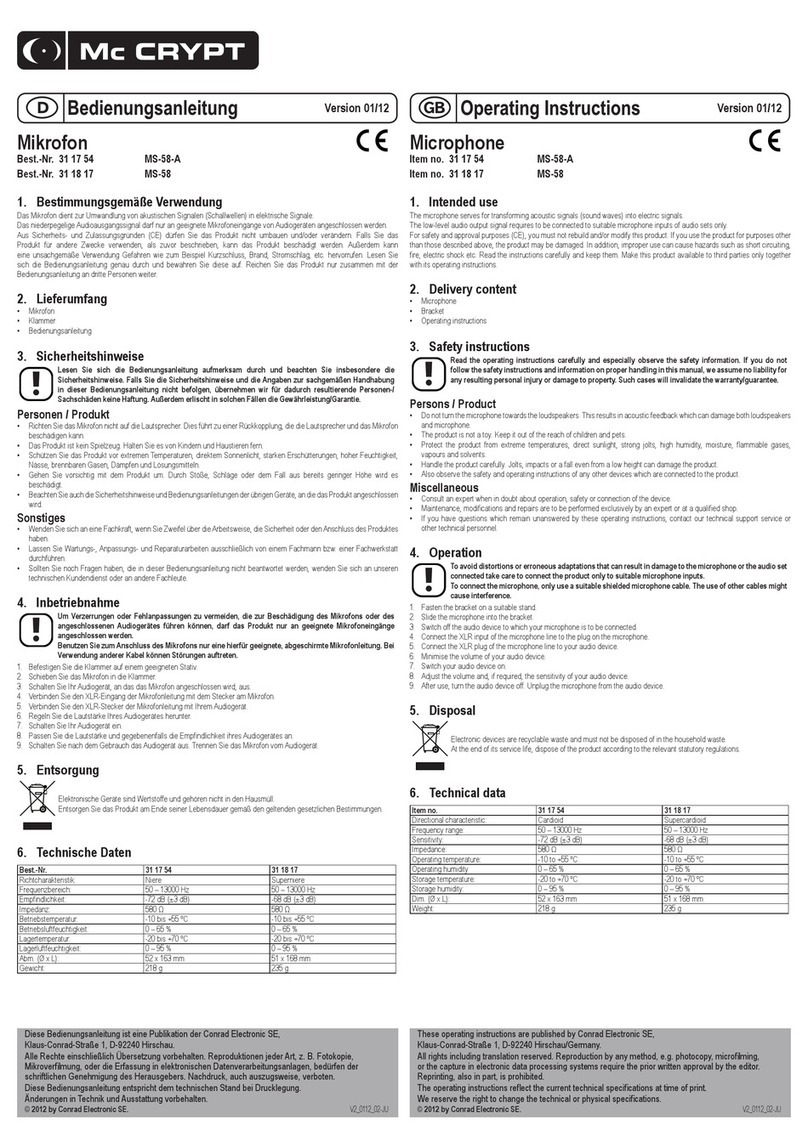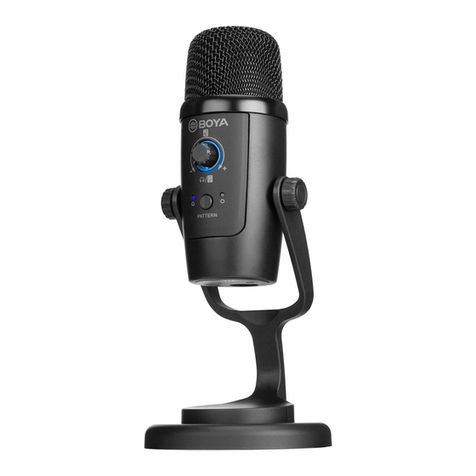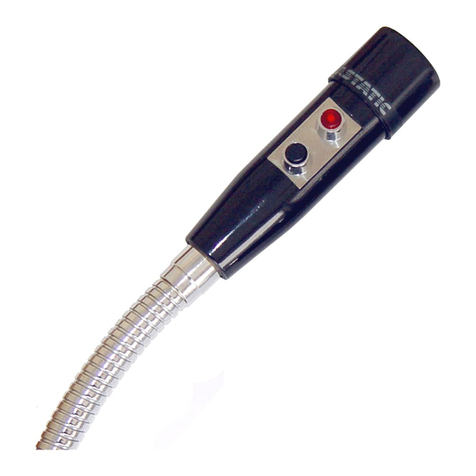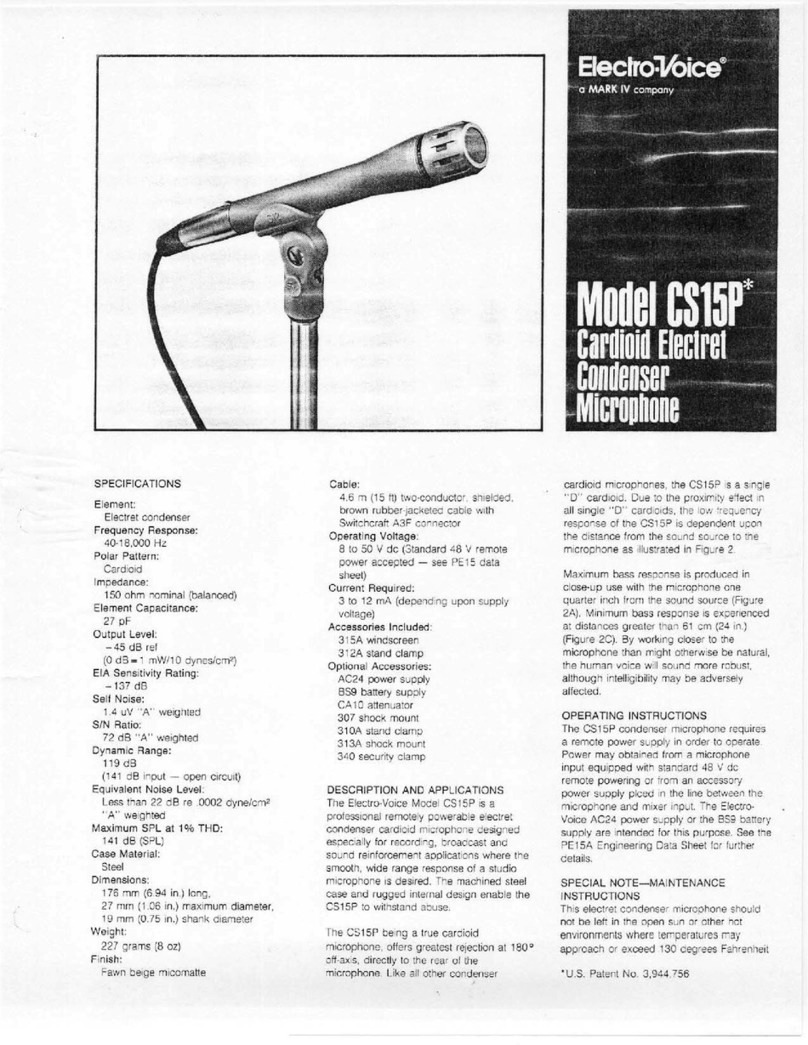Audio Ltd. Envoy User manual

RADIO MICROPHONE SYSTEMS
Envoy
User Guide

88
2
Audio Radio Microphone Systems are noted for their
ease of use. If however you need advice or technical
support at any time please contact Audio Ltd.
All products come with free lifetime technical support,
and we are also always pleased to help users of our
equipment, whatever the application.
Audio Ltd,
Audio House
Progress Road
High Wycombe
Bucks, HP12 4JD
U.K.
Tel: +44 (0)1494 511711
Fax: +44 (0)1494 539600
email: [email protected]
World Wide Web: http://www.audioltd.com
Copyright © 2001 Audio Limited
Part no: ENVOY/1
This guide was produced by
Human Computer Interface Limited,
http://www.interface.co.uk

88
3
Contents
Introduction 5
Audio Limited ........................................................................ 5
The Envoy Range .................................................................. 5
Diversity reception ............................................................... 7
Selecting frequencies ......................................................... 8
Switch
iR
Infra-Red Controller 9
Using Switch
iR ......................................................................
9
CX
iR
Diversity Receiver 11
Controls, displays, and connections ............................... 11
Setting up the CX
iR ............................................................
12
Technical specification ..................................................... 17
TX Blue Pocket Transmitter 18
Controls, displays, and connections ............................... 18
Setting up the TX Blue ....................................................... 19
Technical specification ..................................................... 20
HX
iR
Hand-Held Transmitter 21
Controls, displays, and connections ............................... 21
Setting up the HX
iR ............................................................
23
Fitting the microphone capsule ....................................... 27
Holding the HX
iR .................................................................
27
Technical specification ..................................................... 28
MX
iR
Receiver 29
Controls, displays, and connections ............................... 29
Setting up the MX
iR ...........................................................
30
External powering .............................................................. 33
Technical specification ..................................................... 34
Aud
iR
Infra-Red Controller 35
Installing Aud
iR ...................................................................
35
Running Aud
iR ....................................................................
35

88
4
Introduction
Troubleshooting 39
CX
iR
...................................................................................... 39
TX Blue ................................................................................. 39
HX
iR ......................................................................................
39
MX
iR .....................................................................................
40
No audio output .................................................................. 40
Cable wiring diagrams 41
Index 45

88
5
CHAPTER
1
CHAPTER
1
Introduction
This chapter gives a general introduction to radio
microphones, and shows how the Envoy and iR
Series products interrelate.
○○○ ○○○○○○○○○○○○○○○○○○○○○
Audio Limited
Audio Limited has been designing and manufacturing
broadcast quality radio microphone systems since 1963,
and over this period they have become the choice of
professional sound mixers around the world.
Audio Limited’s systems have acquired an acclaimed
reputation for reliability and transparent sound quality
through our commitment to designing products with
maximum input from the customer.
All products designed by Audio Limited are a result of
listening to our customers.
○○○ ○○○○○○○○○○○○○○○○○○○○○
The Envoy Range
The Envoy Range of radio microphone system
components eliminates all mechanical switching by
using infra-red remote control. This allows you to
change settings, such as the frequency and audio level,
and check the status of the units, such as the battery
status and settings, even if they are not fully accessible,
such as when mounted in a camera.
Infra-red control is provided in the Envoy range of
receivers, and in the HX
iR
hand-held transmitter.
The illustration opposite shows the products in the
Envoy Range.
Switch
iR
The infra-red controller for the Envoy receivers and
transmitters.
TX Blue
A multi-frequency synthesised UHF pocket transmitter,
for use on location with a range of microphones.

88
6
Introduction
<>
Menu
OK
TX Blue
HX
iR
MX
iR
Envoy Envoy
CX
iR
Receivers
Transmitters
Switch
iR
Camera
Introduction
HX
iR
A multi-frequency infra-red controlled UHF hand-held
transmitter designed for use with a range of high-quality
microphone capsules from the Schoeps Colettte range.
CX
iR
A multi-frequency UHF infra-red controlled diversity
receiver designed to interface with the internal slot in
several widely used camcorders. It can also be mounted
externally, and used as a portable receiver for
documentary and ENG purposes.
MX
iR
A multi-frequency UHF infra-red controlled non-diversity
receiver with internal battery compartment for portable
use in a wide range of applications.

88
7
Introduction
The Envoy products are fully compatible with all
existing RMS 2020 and RMS 2000 Series products.
Aud
iR
The Envoy Range also includes Aud
iR
, an application
designed to run on Palm OS compatible organisers.
Aud
iR
allows you to display the status of any Envoy
Range device on a single convenient Status screen, and
change any of the settings. In addition, it provides a Plot
Signal function, to plot the signal strength, and a Scan
function, to display a frequency scan:
In effect the Scan function acts like a portable spectrum
analyser dedicated to the receiver being addressed.
○○○ ○○○○○○○○○○○○○○○○○○○○○
Diversity reception
When electromagnetic waves are radiated by a moving
transmitter, the receiver picks up reflected signals from
surrounding structures as well as the directly radiated
signal. These reflected signals combine with the direct
signal, and in the case where the combining signals are
out of phase with each other, a drop-out or loss of signal
results.
To eliminate this cancellation effect Audio Limited
employ the true diversity technique in the CX
iR
receiver.
The CX
iR
receiver incorporates two separate receivers
fed by separate antennae. A comparator circuit
compares the RF levels from the two receivers ensuring
that the receiver will always switch to the strongest
signal. A noiseless switching circuit takes full
advantage of the accurate level detection to allow
switching as often as needed without noise or clicks.
The result is a reliable, drop-out free, broadcast-quality
audio signal indistinguishable from a line microphone.
Introduction

88
8
Introduction
○○○ ○○○○○○○○○○○○○○○○○○○○○
Selecting frequencies
The Envoy Range provides a choice of 32 pre-
programmed operating frequencies within a 24MHz
block, in the 470MHz to 1000MHz range. This allows you
to select a frequency appropriate to the location.
The Aud
iR
Palm OS application can be used in
conjunction with the CX
iR
and MX
iR
receivers to
accurately locate any unused channels in a particular
location, thereby eliminating any guesswork.
The Switch
iR
infra-red controller allows you to check
and change the frequency on the CX
iR
and MX
iR
receivers, and the HX
iR
transmitter.

CHAPTER
2
88
9
SwitchiR Infra-Red
Controller
The Switch
iR
is a compact infra-red controller
designed for use with the Envoy Range. It provides
functions to allow you to read the status of a device,
or change its settings. In addition it includes a
convenient built-in 9V battery tester:
<>
Menu
OK
○○○ ○○○○○○○○○○○○○○○○○○○○○
Using SwitchiR
Full instructions for using Switch
iR
with each of the
products in the iR Series are given in the appropriate
chapter of this guide.
The following table summarises the Switch
iR
functions,
and describes the additional functions included in
Switch
iR
CHAPTER
2

88
10
SwitchiR Infa-red
Controller
Menu Description
Fr Press OK to read the transmitter or receiver
frequency setting. Press OK again followed by
aor vto select a new frequency, and press OK
to transmit to the unit.
AF Press OK to read the receiver or transmitter
audio level. Press OK again followed by aor v
to select a new audio level and press OK to
transmit it to the unit.
LF Cut Press OK to read the transmitter’s LF cut setting.
Press OK again followed by aor vto switch
the setting between on or off and press OK to
transmit it to the unit.
Batt Press OK to read the transmitter or receiver
battery level. For receivers the receiver battery
level alternates with a transmitter battery status
indicator: H (high), L (low), or F (fail).
Int Batt Displays the battery voltage of the Switch
iR
internal battery. If this falls below 5.00V the
internal battery should be replaced.
9V Batt Allows you to test a 9V 6LR61 type battery by
holding it against the two metal terminals on the
side of the Switch
iR
. A reverse polarity warning
is displayed if the battery is connected the
wrong way round.
Sn Press OK to read the serial number of a receiver
or transmitter and display it on the display. The
serial number consists of a six-digit prefix
followed by a two-digit suffix, and these are
flashed alternately on the display.
User ID Displays the unit’s user ID. You can edit the user
ID using the Aud
iR
application.
iR disable Press OK to disable the infra-red port on a
transmitter or receiver until power is
disconnected and reapplied.
Off Press OK to turn a transmitter off. Not available
for receivers.

88
11
CHAPTER
3
CXiR Diversity
Receiver
The CX
iR
is a multi-frequency UHF diversity
receiver, designed with a range of modular adapters
to allow it to be mounted internally in the latest
camcorders from Sony, Philips, and Ikegami.
Alternatively, a universal adapter fitted with the six
pin Lemo socket is available allowing the CX
iR
to be
used externally with camcorders that do not provide
a built-in wireless microphone receiver slot. Also,
the CX
iR
can be used as a portable documentary or
ENG receiver. All settings can be read or changed
via infra-red control using the Switch
iR
.
○○○ ○○○○○○○○○○○○○○○○○○○○○
Controls, displays, and connections
Top panel
Antenna 2
RX2 (yellow)
Antenna 1 Infra-red port
(yellow) RX1
No
signal
(red)
Low TX
battery
(amber)
Antenna 1/Antenna 2
SMA sockets to which the antennae are connected.
Infra-red port
Receives commands from and transmits status
information back to the Switch
iR
infra-red controller.
RX1/RX2 indicators (yellow)
Indicates which of the unit’s two built-in receivers is
active at any time.
Low TX battery indicator (amber)
Indicates when the transmitter battery is low and needs
replacing.
No signal indicator (red)
Indicates that no carrier signal is being received from
the transmitter, such as when the transmitter is
switched off or set to an incorrect frequency.
CHAPTER
3

88
12
CXiR Receiver
○○○ ○○○○○○○○○○○○○○○○○○○○○
Setting up the CXiR
To set up the CX
iR
in conjunction with a suitable
transmitter, such as the HX
iR
or TX Blue:
•Fit the receiver into the camera.
•Connect the RX1 and RX2 antennae.
•Set the audio input selector switch to the appropriate
position on the camcorder.
•Select the operating frequency.
•Set the output level.
•Check the power status.
•Check that one of the RX1 and RX2 indicators (yellow)
is illuminated, and that the no signal indicator (red) is
not illuminated.
These steps are explained below:
Mounting the receiver into the camera
To mount the CX
iR
receiver in the wireless microphone
receiver slot on the camcorder:
•Remove the plate covering the receiver slot on the
camcorder.
•Fit the appropriate cover plate on the CX
iR
receiver:
Rubber faced
gasket
•Ensure that the plate is oriented correctly.
•Slide the cover plate gently towards the top of the
receiver:
•Ensure the receiver has the correct interface
connector for the camcorder you are using.
•Fit the receiver assembly into the slot and press it
gently into place until it is firmly seated.
•Slide the cover plate into position and secure it into
place with the screws provided.

88
13
CXiR Receiver
Connecting the antennae
Connect the antennae to the SMA connectors marked
RX1 and RX2. Connect the straight antenna to one
socket and the right-angled antenna to the other socket.
Selecting the operating frequency
You can check or change the operating frequency of the
CX
iR
receiver via infra-red control using the Switch
iR
.
To check the CX
iR
frequency:
•Press MENU.
The display shows:
FREQUENCY
MHz
Fr
•Align the front of the Switch
iR
with the infra-red
window on the receiver and press OK.
Optimum operating range is between 5 and 15cm.
The Switch
iR
will display the
receiver frequency; for example:
FREQUENCY
Rx MHz
854.900
To change the CX
iR
frequency:
•Press OK again.
The display will alternately flash between frequency and
channel number.
For example:
CHANNEL
01
•Press aor vto scroll through the 32 frequencies
read from the receiver until the required channel or
frequency is displayed.
For example:
CHANNEL
32
•Align the front of the Switch
iR
with the infra-red port
on the receiver and press OK.
If the command was received correctly the display will
show the new frequency.
For example:
FREQUENCY
Rx MHz
857.950
Otherwise the display will show:
Error
CXiR Receiver

88
14
CXiR Receiver
•Repeat the above steps if an error message is
displayed, with the Switch
iR
closer to the receiver.
Setting the output level
The CX
iR
should be set to the correct level as required
by the camcorder. The output level is attenuated in 1dB
steps over a 32dB range. The 0dB reference level is
-25dBu.
To check the CX
iR
output level:
•Press MENU.
•Press aonce until
the display shows:
AF LEVEL
TxRx
AF
•Align the front of the Switch
iR
with the infra-red port
on the receiver and press OK.
The display will show the current
output level setting; for example:
AF LEVEL
Rx
-07 dB
To change the receiver output level:
•Press the OK button.
The AF level display will flash.
•Press the aor vbutton to step between the
available output level settings until the required
output level is displayed.
For example:
AF LEVEL
TxRx
-15 dB
•Align the front of the Switch
iR
with the infra-red port
on the receiver and press OK.
If the command was received correctly the new level
will be displayed.
For example:
AF LEVEL
TxRx
-15 dB
Otherwise the display will show:
Error
•Repeat the above steps if an error message is
displayed, with the Switch
iR
closer to the receiver.
CXiR Receiver

88
15
CXiR Receiver
Checking the DC power status
To check the status of the receiver’s DC power:
•Press MENU.
•Press athree times until
the display shows:
TxRx
BAtt
•Align the front of the Switch
iR
with the infra-red port
on the receiver and press OK.
The display will
show the DC voltage:
Rx
11.9 v
If the associated transmitter is on while the DC status is
being checked the display will alternate between the
receiver’s DC status and the received transmitter DC
status.
For example:
Tx
H
The transmitter status is shown as one of the following
options:
Option Description
H (high) Indicates good.
L (low) Indicates low. Replace as soon
as possible.
F (failed) Transmitter will not function
correctly.
Indicators during operation
The CX
iR
should switch between the RX1 and RX2
receivers for best reception, as indicated by the yellow
RX1 and RX2 indicators on the top of the unit.
The red no-signal indicator will be lit if the
corresponding HX
iR
or TX Blue transmitter is not
switched on, or is set to the incorrect frequency. The
amber indicator will be lit if the TX battery goes low.
External powering
A number of different cables and accessories are
available from Audio Limited to allow the CX
iR
receiver
to be externally powered.

88
16
CXiR Receiver
The maximum external DC supply must not exceed 18V.
Exceeding this voltage will result in damage to the
receiver.
Audio Limited recommend the use of their regulated
cables to prevent damage to the CX
iR
.
Mounting options
The CX
iR
can be supplied already fitted with the
appropriate adapter for a specific camcorder.
Alternatively it can be supplied with a Lemo adapter for
applications where the CX
iR
is to be used with a mixer,
or a camcorder without an integral wireless microphone
receiver slot. In this case the receiver can be mounted
onto the camera with an appropriate bracket available
from Audio Limited.
Adapters are available separately to allow you to modify
a CX
iR
for use with a different camcorder. To change the
adapter unscrew the four screws on the side of the unit
at the base with a slotted screwdriver. Slide out the
adapter and replace it with the appropriate replacement
adapter:
Do not remove the screws at the base of the unit.

88
17
CXiR Receiver
○○○ ○○○○○○○○○○○○○○○○○○○○○
Technical specification
Frequency range 470MHz–1000MHz
Number of frequencies 32 pre-programmed
Switching bandwidth 24MHz
Sensitivity -98dBm for 40dB SINAD
Frequency response 50Hz to 18kHz ±1dB
THD <0.2% typical
Signal to noise ratio 96dB to over 104dB
External power 7-18V DC
150-55mA
Antenna connector 2xSMA
Output connector 6 pin LEMO TM
Interchangeable module 15 pin D-type (Sony)
25 pin D-type (Ikegami)
44 pin D-type (Philips)
Size 98 x 60 x 18mm
Weight 150g
Operating range -20C˚to +55˚C
Compliant to ETS 300 422 EN 300 445(CE)
FCC

88
18
CHAPTER
4
TX Blue Pocket
Transmitter
The TX Blue transmitter is a small, lightweight,
battery-powered pocket transmitter for use with a
wide range of lapel microphones.
○○○ ○○○○○○○○○○○○○○○○○○○○○
Controls, displays, and connections
Top panel
0
1
2
3
4
5
6
7
8
9
AntennaGainOn
F1
Off
F2
Overload
indicator
(red)
Audio
input LF cut
Audio input
Allows a microphone or line-level input to be connected.
LF cut
Gives approximately 6dB LF cut at 50Hz, to assist in the
reduction of wind noise.
F1/F2
Selects between the two banks of 16 frequencies; see
Selecting the operating frequency
, page 13.
On/Off
Switches the power on or off. The microphone cable
includes a link which disconnects power when the
Lemo plug is removed, in which case the switch can be
left on.
Gain
Provides eight gain options when used with standard
microphones. 0 gives minimum gain, and each position
increases the gain by approximately 4dB giving a total of
30dB of adjustment. Position 8 and 9 provide line-level
input to 600Ωimpedance.
Overload indicator (red)
Indicates that the low distortion overload limiter is
operating.
CHAPTER
4

88
19
TX Blue Pocket
Transmitterr
○○○ ○○○○○○○○○○○○○○○○○○○○○
Setting up the TX Blue
To set up the TX Blue in conjunction with a CX
iR
:
•Fit the battery.
•Set the transmitter and receiver to the same
operating frequency.
•Connect the antenna.
•Switch on.
•Connect the microphone.
•Check that the receiver’s red, no signal indicator is
not illuminated.
•Set the microphone gain.
These steps are explained below:
Fitting the battery
To open the battery compartment press the release
buttons at each end of the battery tray and slide out the
tray. Insert a 9V 6LR61 type alkaline battery, observing
the polarity as shown on the inside of the tray, and
replace the tray. Do not use excessive force:
+
_
+
_
An electronic resettable fuse protects the transmitter
from reverse powering. A low transmitter battery
indicator is provided on the CX
iR
Receiver.
External powering
The transmitter can also be externally powered by a
number of different cables available from Audio Limited.
The external DC power must not exceed 12V or damage
will occur.
Selecting the operating frequency
Select the operating frequency you want to use from the
label on the side of the TX Blue. Set the F1/F2 switch to
F1 (first column of frequencies) or F2 (second column of
frequencies). Rotate the switch inside the TX Blue
battery compartment using a small screwdriver to select
the frequency, 1 to 16.
Switch the TX Blue off and back on again to enable the
change in frequency.

88
20
TX Blue Pocket
Transmitter
Connecting the antenna
Connect the flexible antenna to the SMA connector.
Connecting the audio input
Connect the microphone or line-level input to the six-pin
Lemo connector. Both positive and negative bias
voltages are provided, enabling the majority of electret
lavalier microphones to be used with the TX Blue.
A number of different input cables are avilable from
Audio Limited to allow dynamic, T-powered, and 48V
phantom powered microphones to be used with the
transmitter.
Setting the microphone gain
The microphone gain control should be adjusted to suit
your particular requirements. Select the gain position
such that the overload indicators do not illuminate
during normal speech.
○○○ ○○○○○○○○○○○○○○○○○○○○○
Technical specification
Frequency range 470MHz–1000MHz
Frequency stability Better than ETS 300–422
Number of frequencies 32 pre-programmed
Output power 50mW nominal
Gain control range 30dB in 8 steps, plus 2 steps for
600Ωline input
Maximum input level -6dBm (position 7)
+6dBm (position 8, 600Ω)
Frequency response 50Hz to 15kHz ±1dB
THD <0.1% at working levels
<0.3% at gain position 7 with
-6dB input in overload
Battery 1 x 9V 6LR61 Alkaline
Battery life More than 6 hours
Size 87 x 60 x 21mm
Weight 115g
Operating range -20˚C to +55˚C
0885
Table of contents
